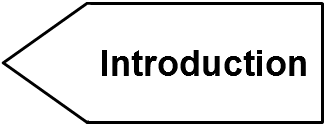nserman@fsb.hr Transfer Function Concept Digest
1. DYNAMIC SYSTEM BLOCK FORMAT
Dynamic systems are often quite complex. We use analysis and synthesis to deal with all their complexity.
Analysis
To analyze behavior of dynamic system we split its overall function into components. Such components are called blocks. Each block is an approximation of a system part.
Block is determined through interactions of its inputs and outputs i.e. how outputs depend on inputs. Blocks are fully understood. There are no surprises with them – for all the times each block always behave the same way.
Elementary blocks have only one output y and one input x.

Fig 1.1 Block presentation of a Single Input – Single Output (SISO) component
Synthesis
Synthesis reconstructs the analysed system back using blocks. What we get is a system approximation in a block format.
The system approximation is then qualitatively analyzed. The conclusions reached are applied back to the real world system.
Analysis and synthesis can not give us a full picture of the system behavior. It just gives answers to specific questions asked such as stability prediction for example. A level of the answers accuracy and reliability is in accordance to the level of the approximations taken.
The results of analyses and syntheses as stated in the previous paragraph might not sound like much however, they are often either the only one or the best available mean to deal with complex dynamic systems.



